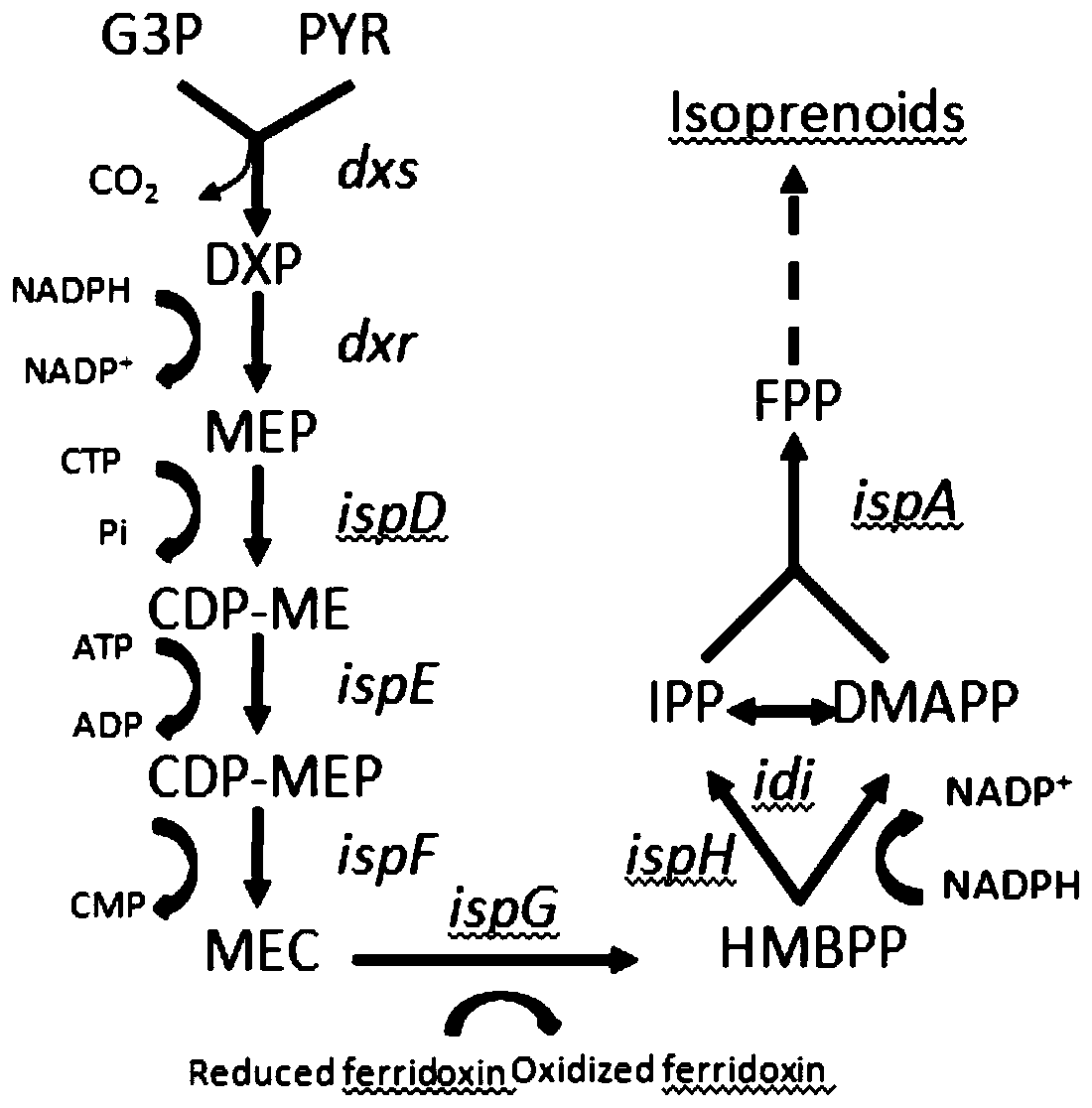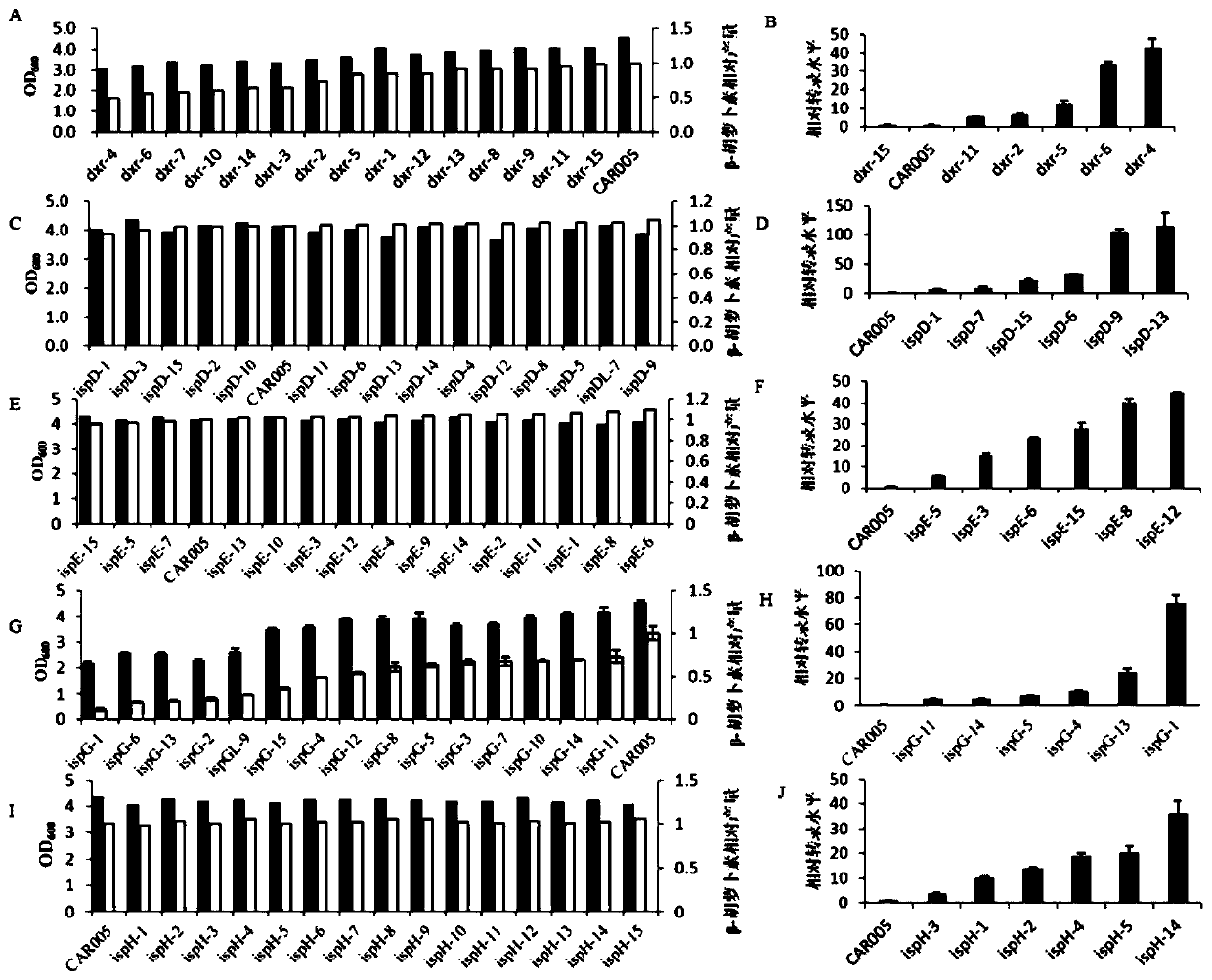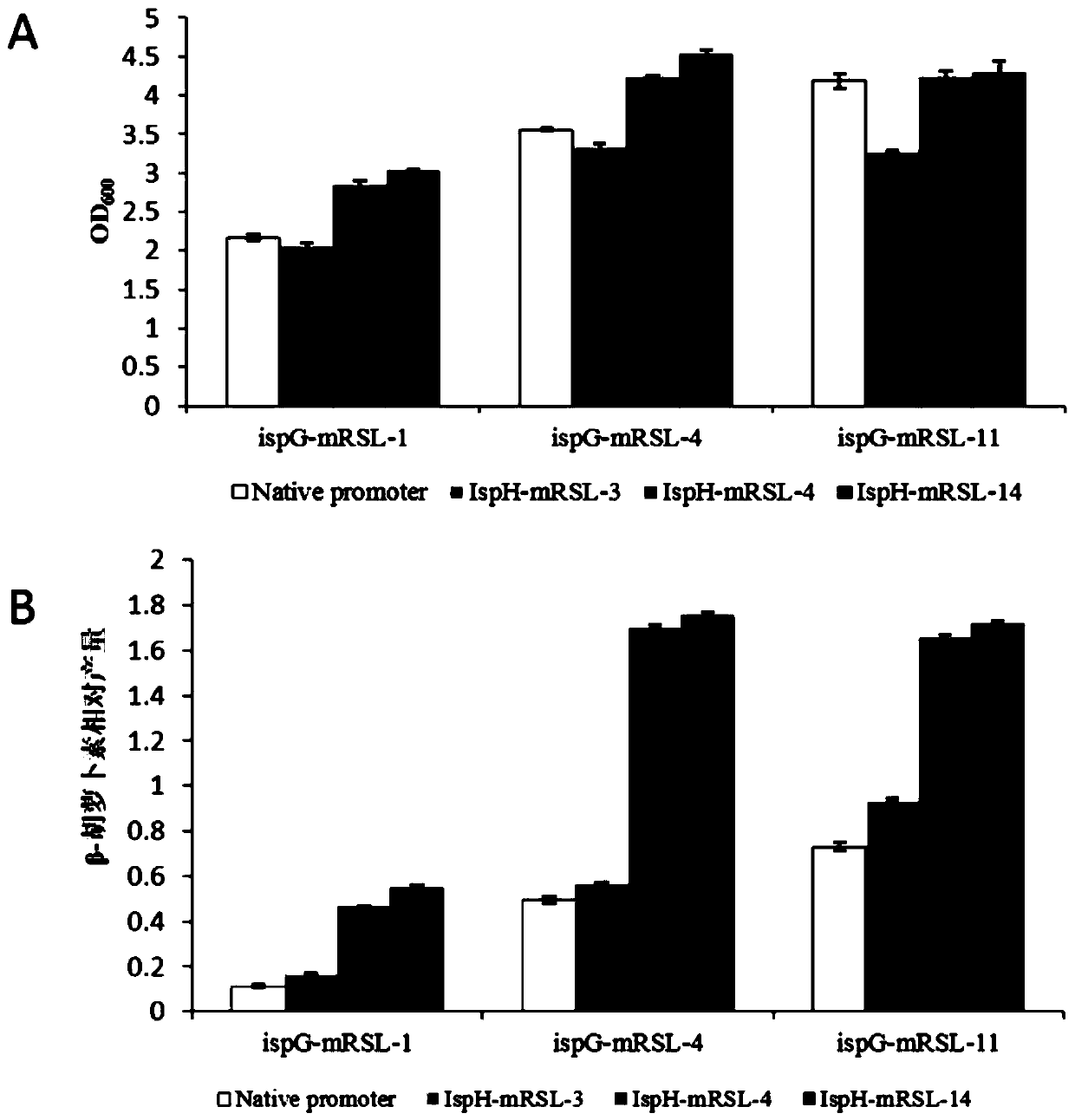Construction method and application of a recombinant bacterium producing lycopene
A technology of lycopene and recombinant bacteria, applied in the biological field, can solve the problems of reducing expression intensity and producing β-carotene by recombinant Escherichia coli
- Summary
- Abstract
- Description
- Claims
- Application Information
AI Technical Summary
Problems solved by technology
Method used
Image
Examples
preparation example Construction
[0070] The preparation method of salt-free LB is as follows:
[0071] 50% sucrose solution: Weigh 500g of sucrose, dissolve it in a small amount of ultrapure water, and dilute to 1L, sterilize at 115°C for 20 minutes.
[0072] 10% salt-free sucrose LB medium: Weigh 5g of yeast extract, 10g of peptone in 800ml of water, sterilize at 115°C for 20min. Add 200ml of 50% sucrose solution after sterilization.
[0073] 6% salt-free sucrose LB medium: Weigh 5g yeast extract, 10g peptone, 15g agar powder, dissolve in 880ml water, sterilize at 115°C for 20min. Add 120ml of 50% sucrose solution after sterilization.
[0074] The concentrations of chloramphenicol, ampicillin, and kanamycin in the examples were 34 μg / L, 50 μg / L, and 50 μg / L, respectively.
[0075] The preparation method of fermentation medium is as follows:
[0076] 1. 10% glycerin mother solution: Weigh 100g glycerol, add deionized water to 1L, sterilize at 121°C for 20min.
[0077] 2. Trace element mother liquor:. Comp...
Embodiment 1
[0094] Example 1, the relationship between the MEP pathway ispG and ispH gene expression intensity and β-carotene output
[0095] In order to study the MEP pathway in CAR005 (Zhao J, Li Q, Sun T, et al. Engineering central metabolic modules of Escherichia coli for improving beta-carotene production. Metabolicengineering 2013; 17:42-50. Both CAR001 and CAR005D are from this article) The relationship between the expression intensity of each gene and the production of β-carotene, the mRS library was established to regulate dxr, ispD, ispE, ispG and ispH genes, 15 strains were randomly selected, and the production of β-carotene was determined. According to the production of β-carotene, Then select several representative strains and use the real-time quantitative PCR method to measure the gene expression level, and study the relationship between the expression level and the yield of β-carotene.
[0096] 1. Construction of mRS library to regulate dxr, ispD, ispE, ispG and ispH genes...
Embodiment 2
[0152] Example 2. The combination of ispG and ispH regulates the production of lycopene
[0153] In the above example 1, it can be seen that in the experiment of increasing the production of β-carotene by the combination regulation of ispG and ispH, the combination with the highest production of β-carotene is G4H14, that is, the corresponding promoters in mRSL-4::ispG and mRSL-14::ispH Combination, can effectively increase the expression of ispG and ispH, whether it has the same effect on all terpenoids.
[0154] In this example, the combination of mRSL-4::ispG and mRSL-14::ispH is used to regulate lycopene.
[0155] 1. Regulation of ispH gene in LYC010
[0156] Recombinant Escherichia coli LYC013 is the mRSL-14::ispH (sequence 32) in which the ispH gene in the genome of the starting strain LYC010 is pre-inserted for initiating the expression of the ispH gene.
[0157] The above replacement regulates the ispH gene through a two-step method to construct the LYC013 strain, and...
PUM
 Login to View More
Login to View More Abstract
Description
Claims
Application Information
 Login to View More
Login to View More - R&D
- Intellectual Property
- Life Sciences
- Materials
- Tech Scout
- Unparalleled Data Quality
- Higher Quality Content
- 60% Fewer Hallucinations
Browse by: Latest US Patents, China's latest patents, Technical Efficacy Thesaurus, Application Domain, Technology Topic, Popular Technical Reports.
© 2025 PatSnap. All rights reserved.Legal|Privacy policy|Modern Slavery Act Transparency Statement|Sitemap|About US| Contact US: help@patsnap.com



